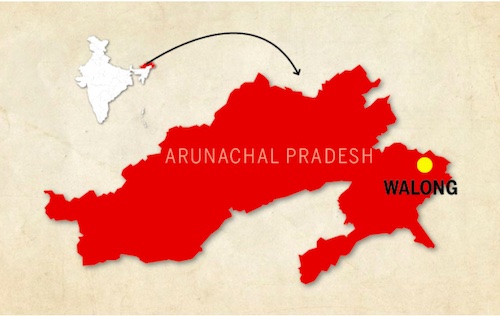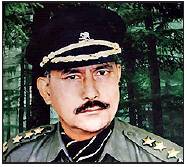1962: Battle of Walong
This is a collection of articles archived for the excellence of their content. |

From: July 14, 2020: The Times of India

From: July 14, 2020: The Times of India

From: July 14, 2020: The Times of India
A brief history

From: Prashant Jha, Battle of Walong: When outnumbered men with old rifles took fight to China, July 13, 2020: The Times of India
Nainital:
Prahlad Singh Deo was just 20 years old in November 1962 when he reached Walong in the erstwhile North East Frontier Agency (NEFA) known today as Arunachal Pradesh. Deo had been inducted into the Indian Army in January 1962 and after a training of just 10 months, he was on the warfront, joining his regiment, 6 Kumaon, that was stationed at Walong. Another young officer, 29-year-old Prem Nath Bhatia was also in Walong as part of 6 Kumaon at that time. The battle that the two were going to be a part of would go down in history books as India’s only offensive in the 1962 war with China. Looking back at the Battle of Walong, that began on November 14, 1962 and lasted for 20 days, Deo says that this episode in the 1962 India-China war is a historic one as the odds were heavily stacked against the Indian forces but still they kept the Chinese People’s Liberation Army (PLA) at bay for the entire 20 days before being asked to pull back.
“The Chinese had better automatic weapons, machine guns and mortars while we had old-style rifles. They were fighting in foxholes and were better placed. Our boots, shirts, trousers and jackets were not good enough to withstand the extreme weather in the Himalayas. Yet we held them off for 20 days, which was quite an achievement,” Deo, whom TOI traced to Tanakpur area of Champawat in Uttarakhand, recalled.
Captain Deo recalled that after the battle, Prime Minister Jawaharlal Nehru came to NEFA. “We had a meal with him. I was sitting beside him. He looked very distraught. He told us that the Chinese had betrayed him. All of us kept looking at him. We could sense that he was broken.”
Deo later served in the 1965 and 1971 Bangladesh wars and retired as a Captain but says that for him, “the Battle of Walong will always be the highlight of my career.” It was of Major Prem Nath Bhatia’s too. Bhatia, nicknamed ‘Sher’ for the bravery he displayed (he was awarded the Vir Chakra for showing extraordinary courage in the battle) met with an accident in February 1965 and passed away. His brother Colonel NN Bhatia, a veteran of the 1965 and 1971 wars, reminisced about the role played by him.
Speaking to TOI from Noida, where he is currently based, Colonel Bhatia, who has written extensively on the Battle of Walong, said, “6 Kumaon was the only unit of the Indian Army to launch a counter-attack on the Chinese defences during the war. They had limited resources but unlimited ferocity and aggression.”